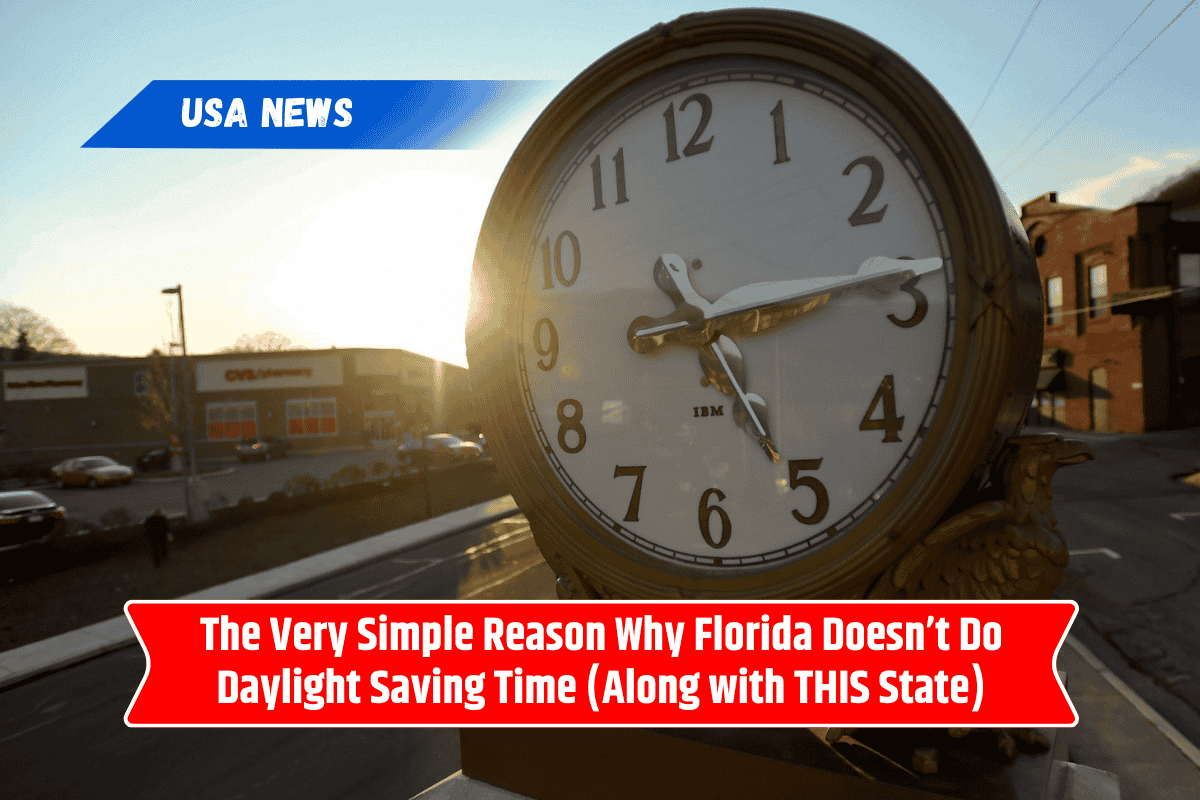Every year, millions of Americans groan when it’s time to “spring forward” or “fall back.” While most of the country still follows Daylight Saving Time (DST), not every state plays along.
You might be surprised to know that Florida wants out—and so does Arizona. But unlike the rest of the nation, these states have a very simple reason for saying “no thanks” to changing the clocks twice a year.
Let’s break it down.
What Is Daylight Saving Time Anyway?
Daylight Saving Time is the practice of setting the clocks one hour ahead in spring and back in fall. The idea is to make better use of daylight during the longer summer days, supposedly saving energy and encouraging more outdoor activity.
But the truth is, DST often causes more problems than benefits:
Sleep disruption
Increased health risks (like heart attacks and accidents after the clock change)
Confusion with scheduling and travel
That’s why more states are questioning whether it’s still worth doing.
Florida’s Move to Stop the Clock
In 2018, Florida passed the Sunshine Protection Act, a law that would make Daylight Saving Time permanent—meaning no more changing clocks ever again. Instead of falling back in November, Florida would stay on DST all year round.
So, why hasn’t it happened yet?
Because federal law doesn’t allow it—yet.
States are allowed to opt out of Daylight Saving Time completely (like Arizona does), but they’re not allowed to stay on it all year without special approval from Congress. Florida has been waiting for that approval ever since passing the bill.
In short:
Florida wants to stop changing the clocks
It passed the law to stay on permanent DST
But federal law has the final say—and so far, it hasn’t changed
Arizona: The State That’s Already Out
Unlike Florida, Arizona doesn’t observe DST at all. The state opted out of it way back in 1968. So when the rest of the country changes their clocks in March and November, Arizona doesn’t budge.
Why?
Because it’s hot enough already.
In Arizona, people don’t want longer daylight hours in the evening—it just means more time in the heat. By sticking to Standard Time, the sun sets earlier, helping things cool down faster in the evening.
The Navajo Nation, which stretches into parts of Arizona, does follow DST—making Arizona one of the few places with two different time practices in the same state.
So, What’s the Real Reason These States Don’t Like DST?
The reasons are simple and sensible:
Florida wants longer evening daylight all year round to match its tourist lifestyle and warm weather.
Arizona prefers cooler evenings and doesn’t want more sunlight when it’s already blazing hot.
Both states are thinking about what works best for their people and their climate—not just following old traditions.
Will More States Follow?
Many states have passed or proposed similar laws, hoping to ditch the time change. But just like Florida, they’re waiting on Congress to give the green light. Until federal law changes, only states that want to stick to Standard Time (like Arizona) can do it.
Changing the clocks twice a year is a habit that many believe has outlived its usefulness. Florida is ready to move on with permanent daylight time, and Arizona already lives without the hassle.
While each has a slightly different reason—beach life vs. desert heat—the message is the same: Daylight Saving Time might not be the bright idea it once seemed.
SOURCES
- (https://en.wikipedia.org/wiki/Daylight_saving_time_in_the_United_States)
- (https://www.timeanddate.com/time/change/usa)
- (https://en.wikipedia.org/wiki/Daylight_saving_time_by_country)
